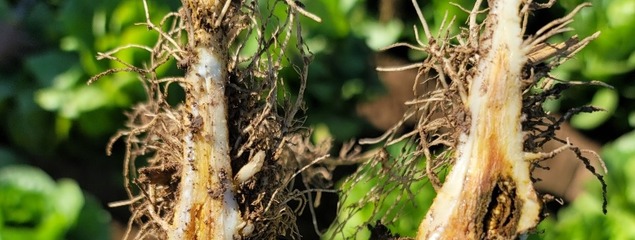
Plant Disease Management
Powdery Mildew
Management Practices
Cultural Control
There are a few cultural practices that are used for powdery mildew management. Overhead sprinkler irrigation is effective in reducing the incidence of disease by washing off spores prior to germination, but the additional leaf wetness exacerbates other plant diseases. Cooler weather reduces the incidence of disease and there is generally less disease in cooler coastal growing regions than interior and desert production areas.
Chemical Control
There are a number of fungicides that are effective against powdery mildew of lettuce. Sulfur has been used for centuries to control powdery mildew on a number of crops. Care must be taken to not apply during warm weather (>90F within 3 days of application) or else phytotoxicity may result. Azoxystrobin and myclobutanil are commonly used along with other products. For information on product efficacy in desert production systems, refer to a recent study by Matheron and Porchas. Before using any product to control powdery mildew on lettuce, check product labels and restrictions and consult with your local Extension Specialists and Pest Control Advisers. Additionally, all product use should be accompanied by a robust program for fungicide resistance management.
Biological Control
Several biological fungicides are commercially available for the control of powdery mildew of lettuce and other hosts. Most are formulations of bacterial species such as Bacillus spp., which perform as fungal parasites. These products are generally regarded as safe for common use, however, they have not been shown to be as effective as other products such as sulfur or oils.

Symptoms: Gerald Holmes, California Polytechnic State University at San Luis Obispo, Bugwood.org

